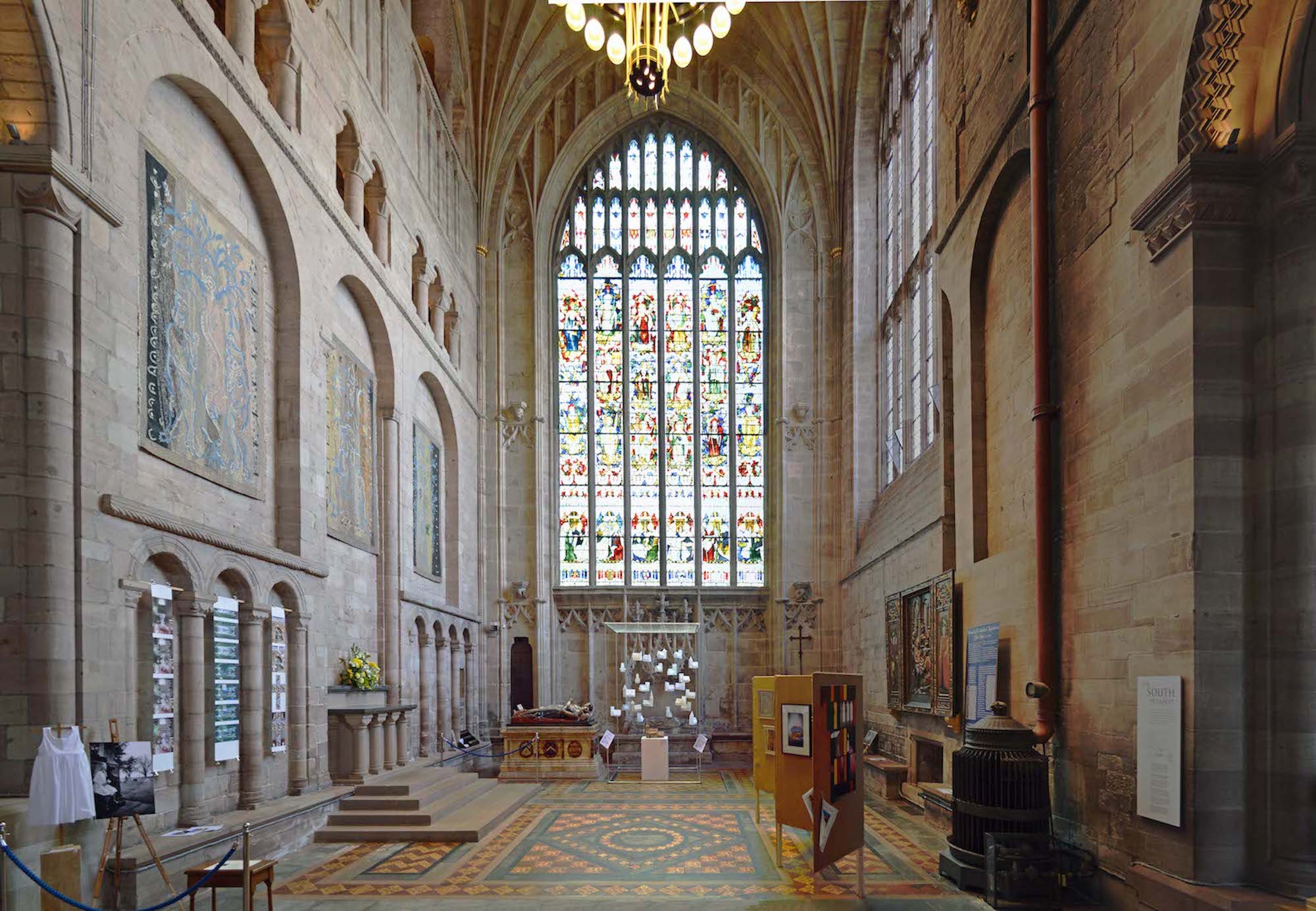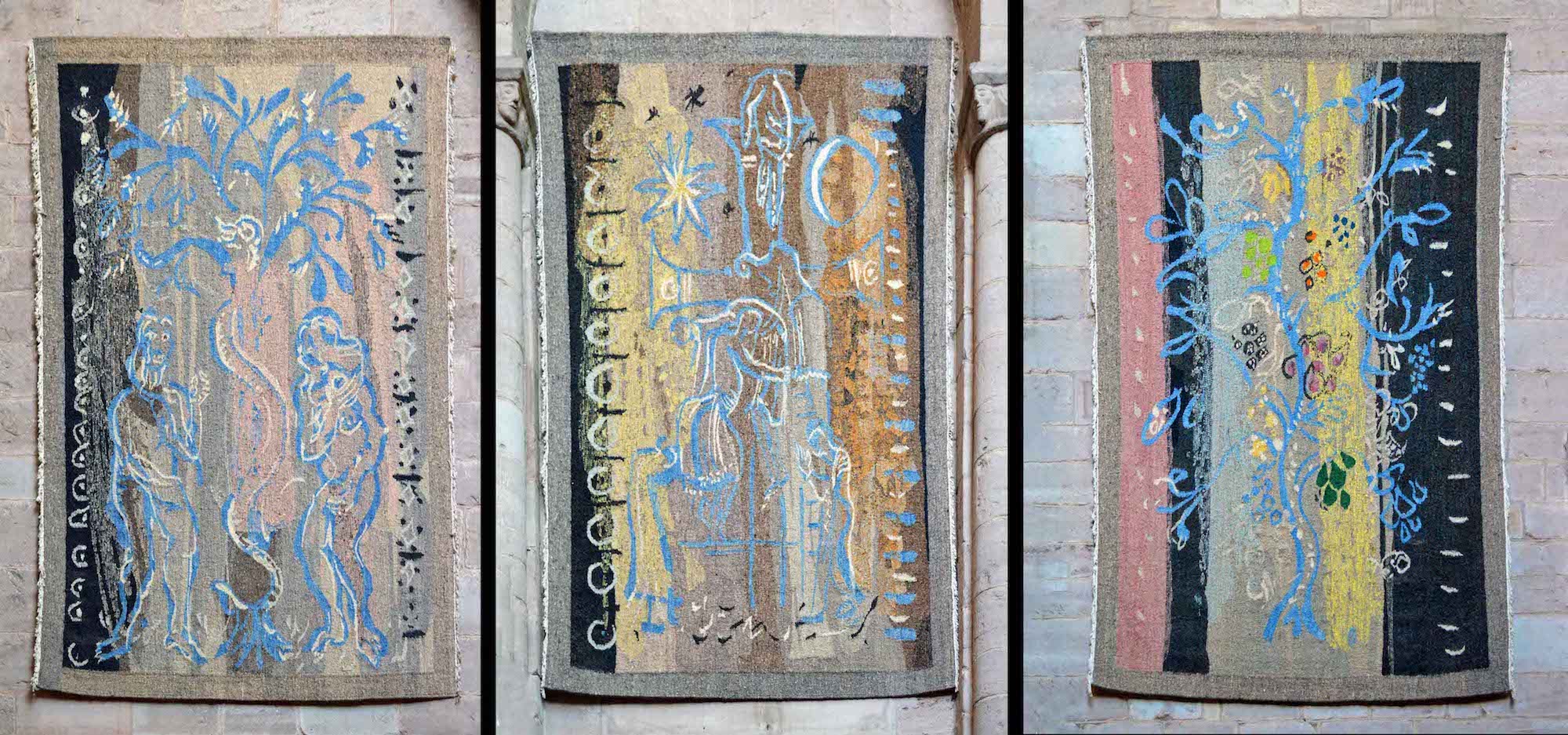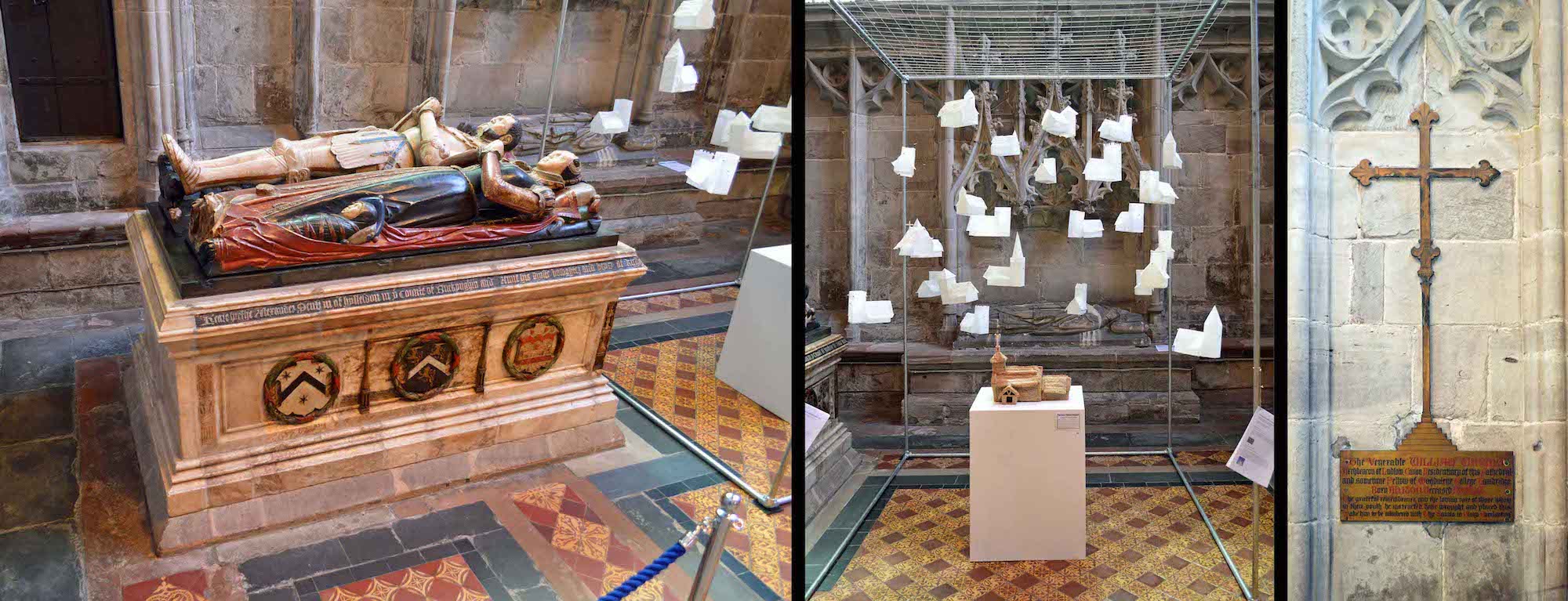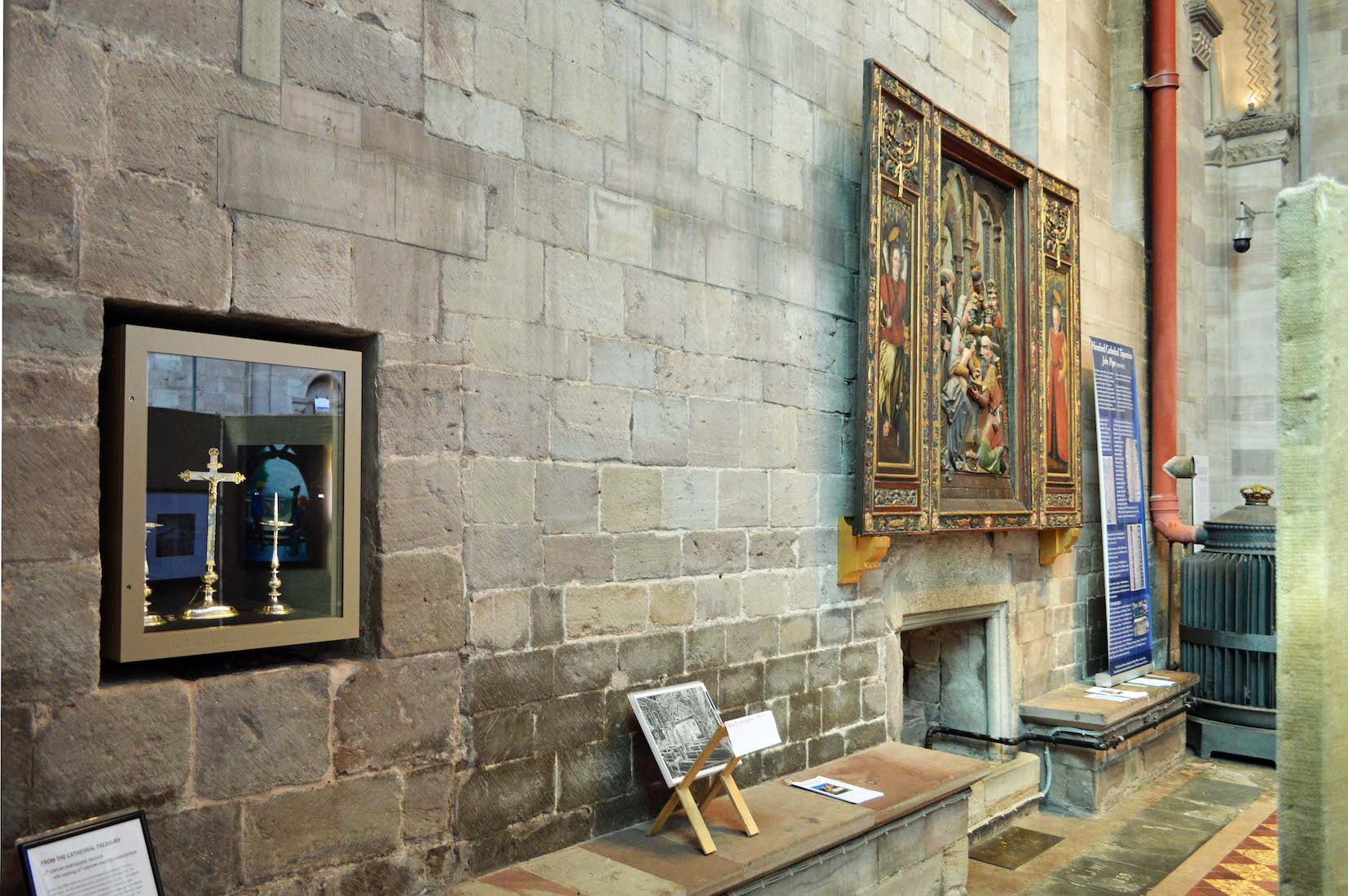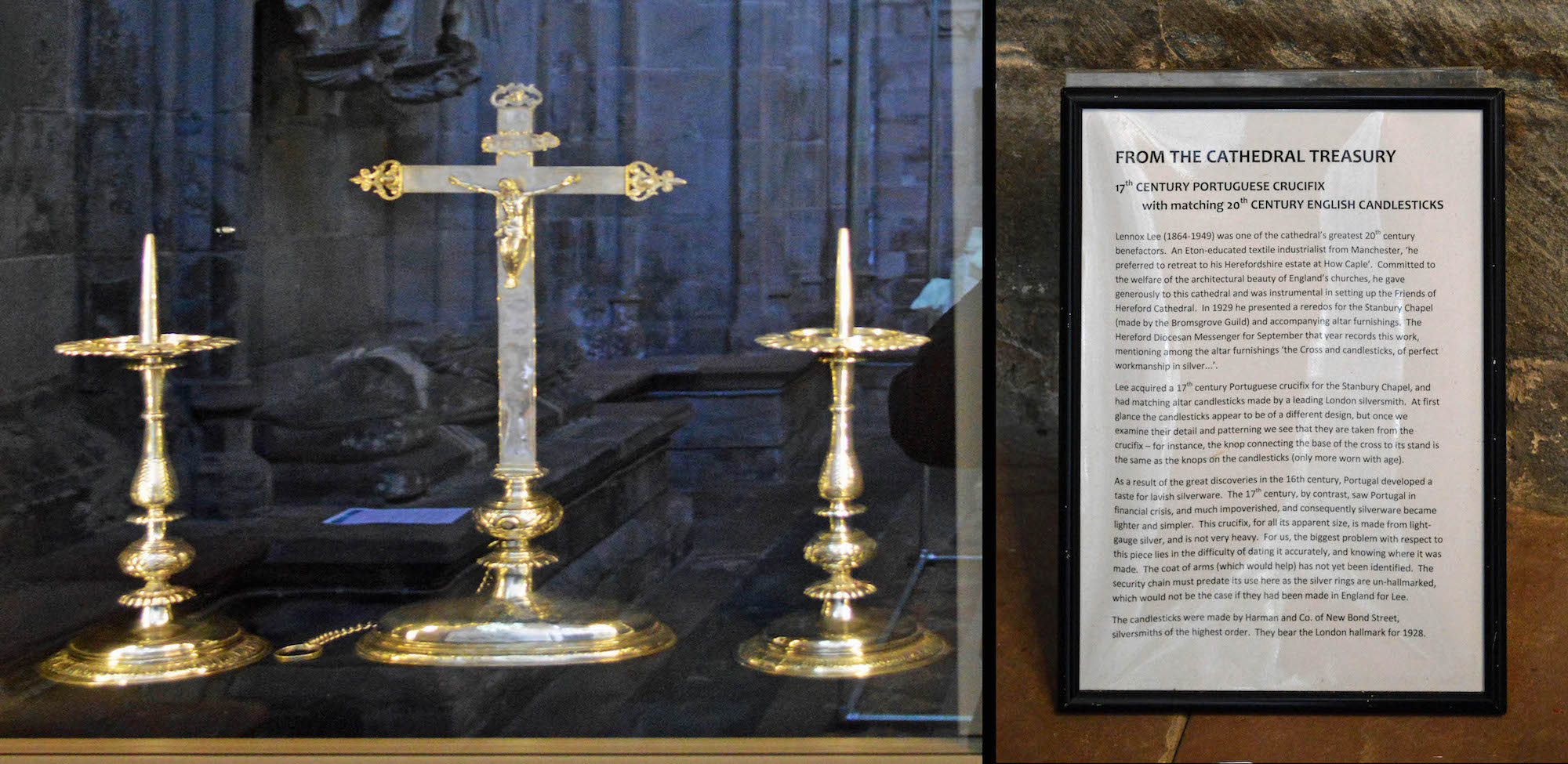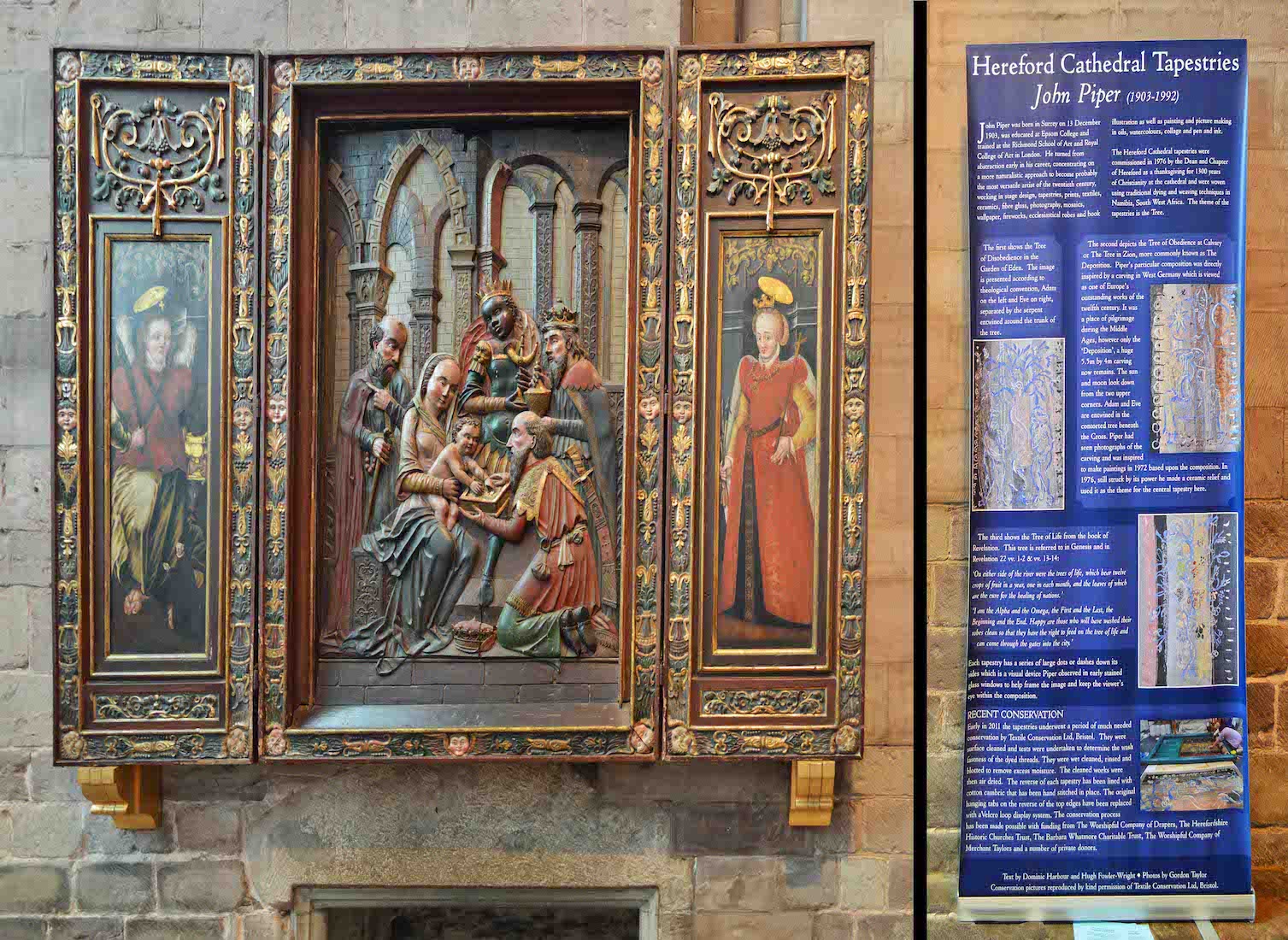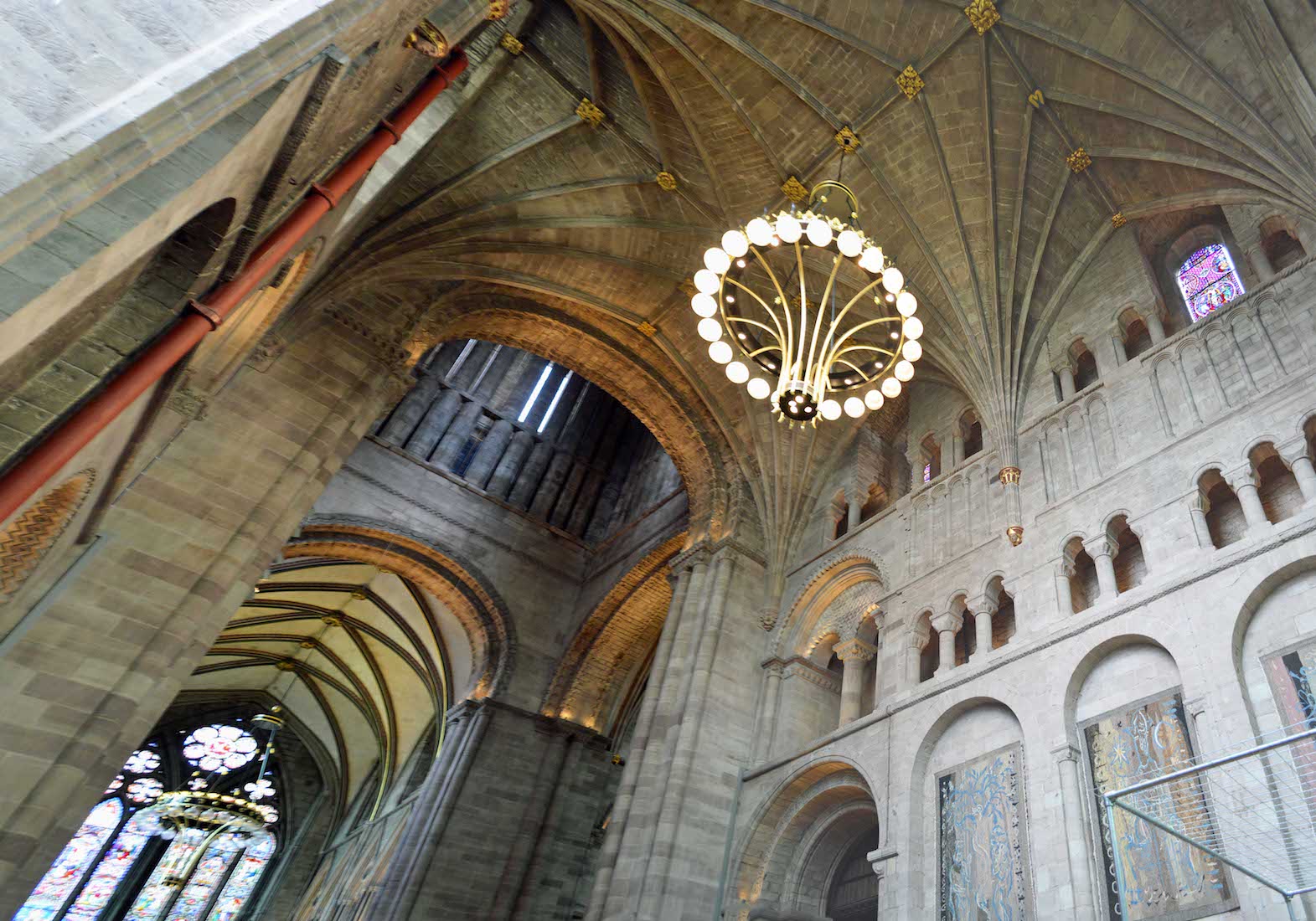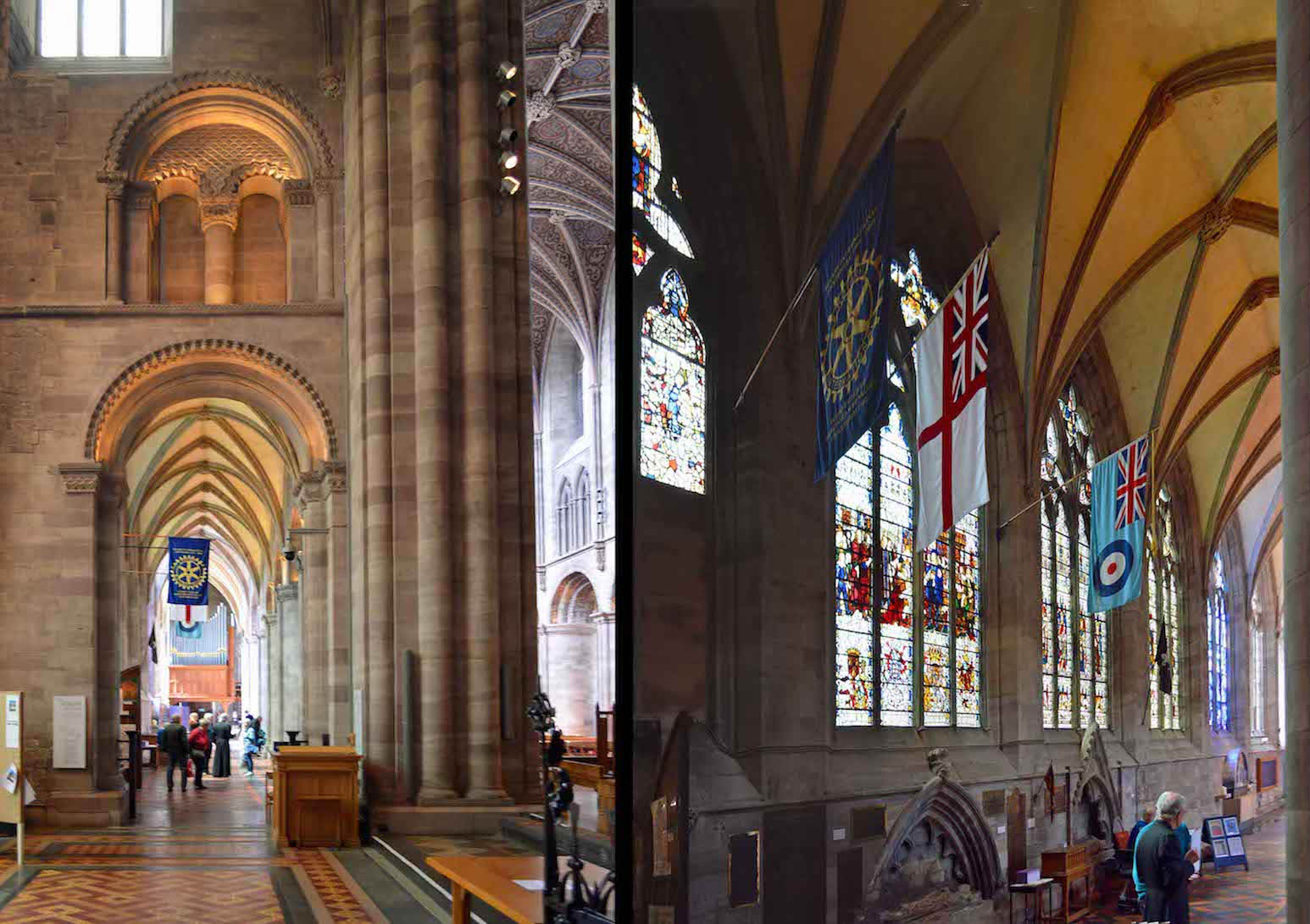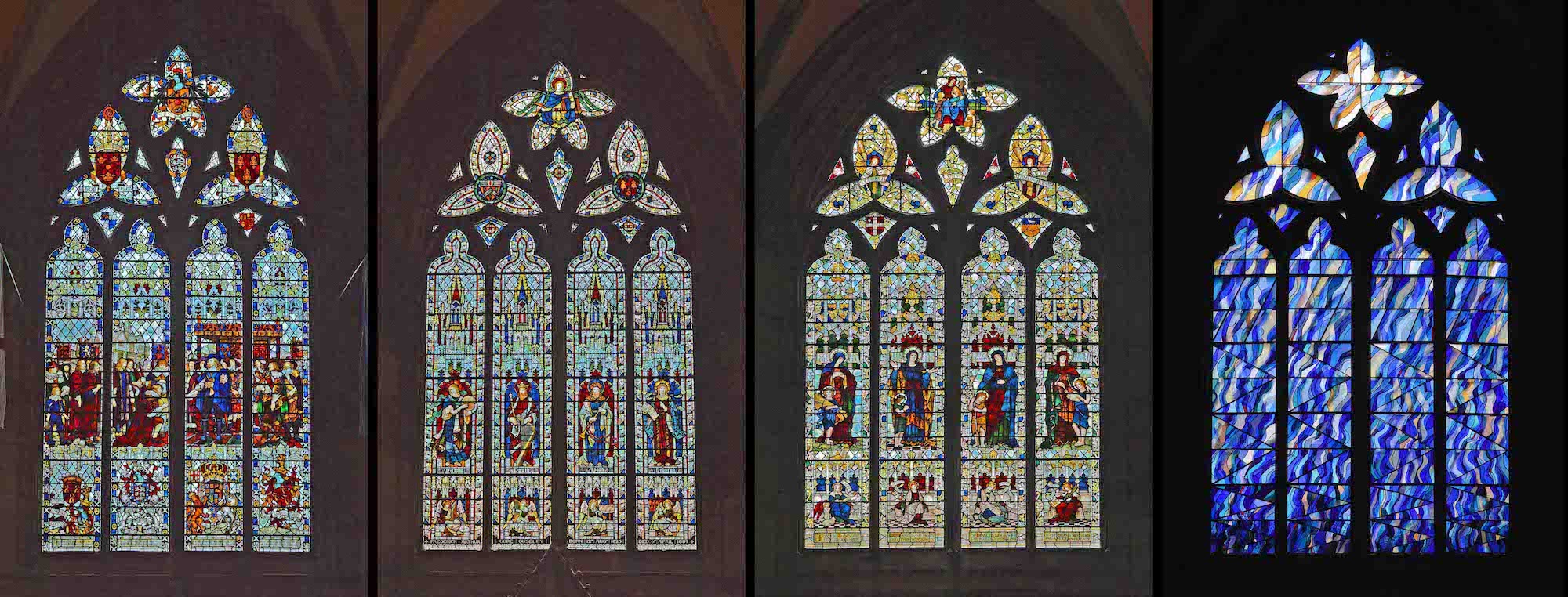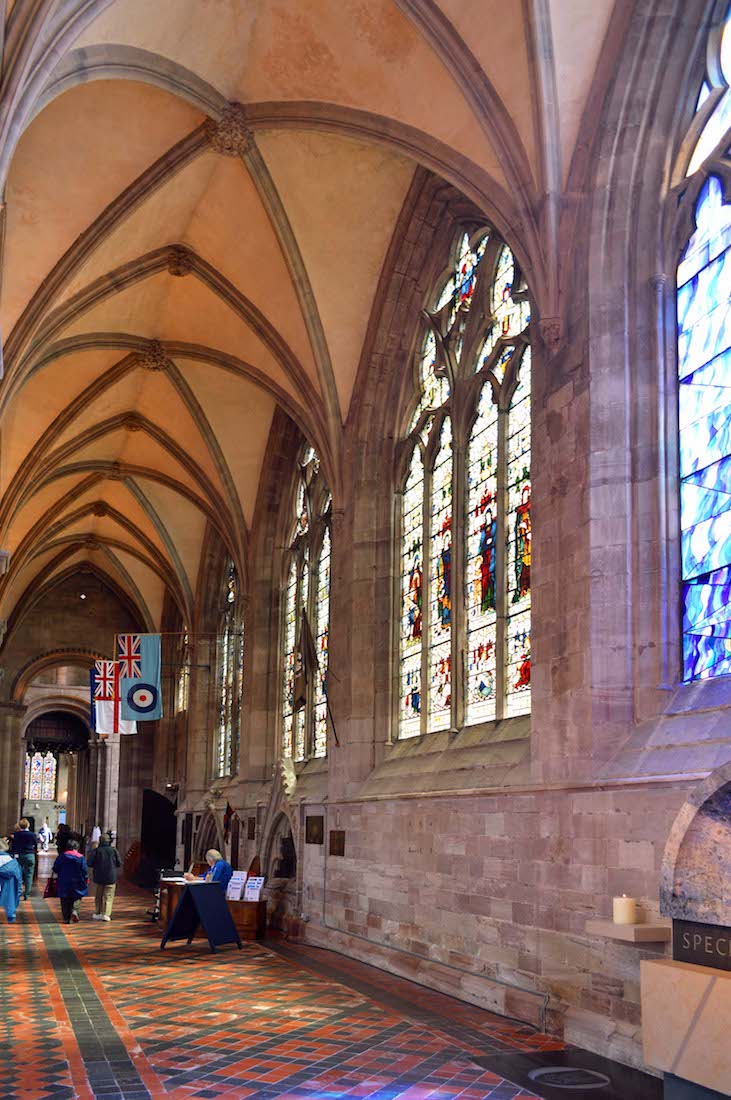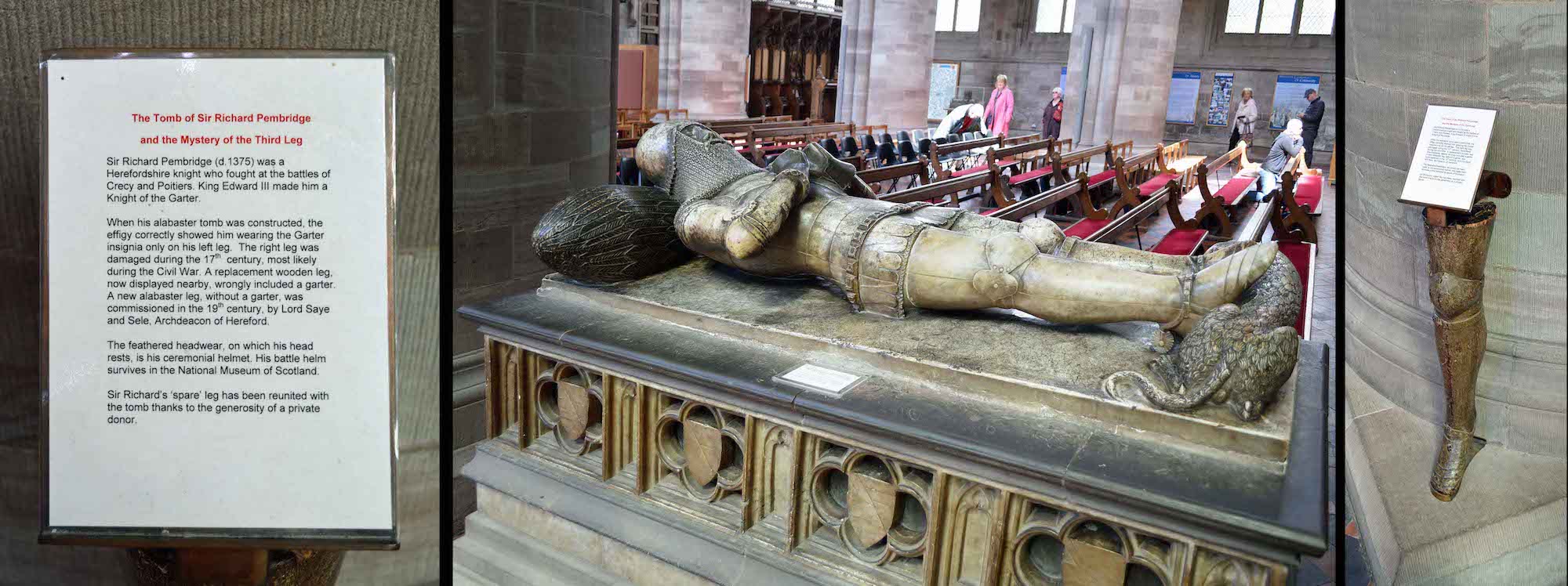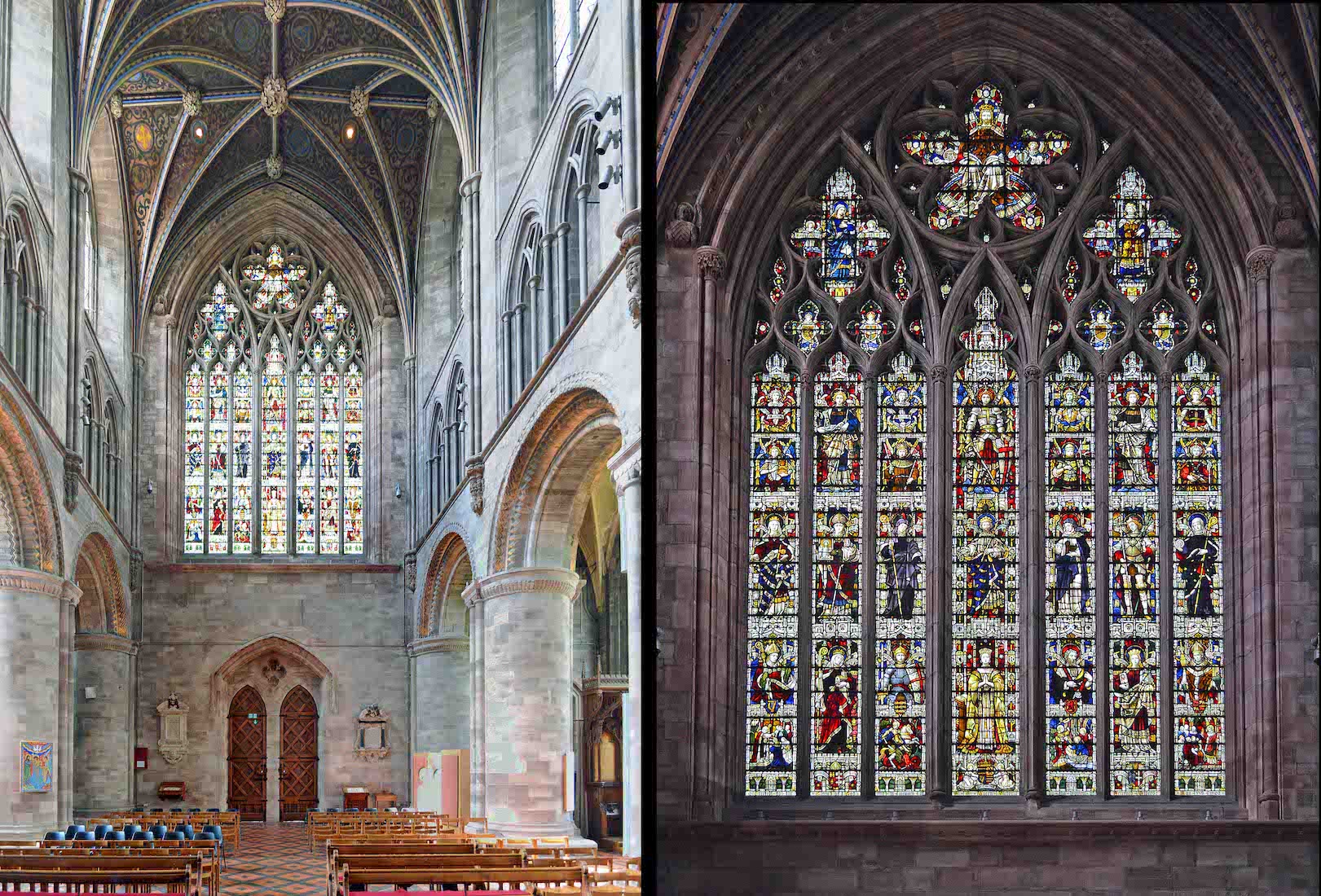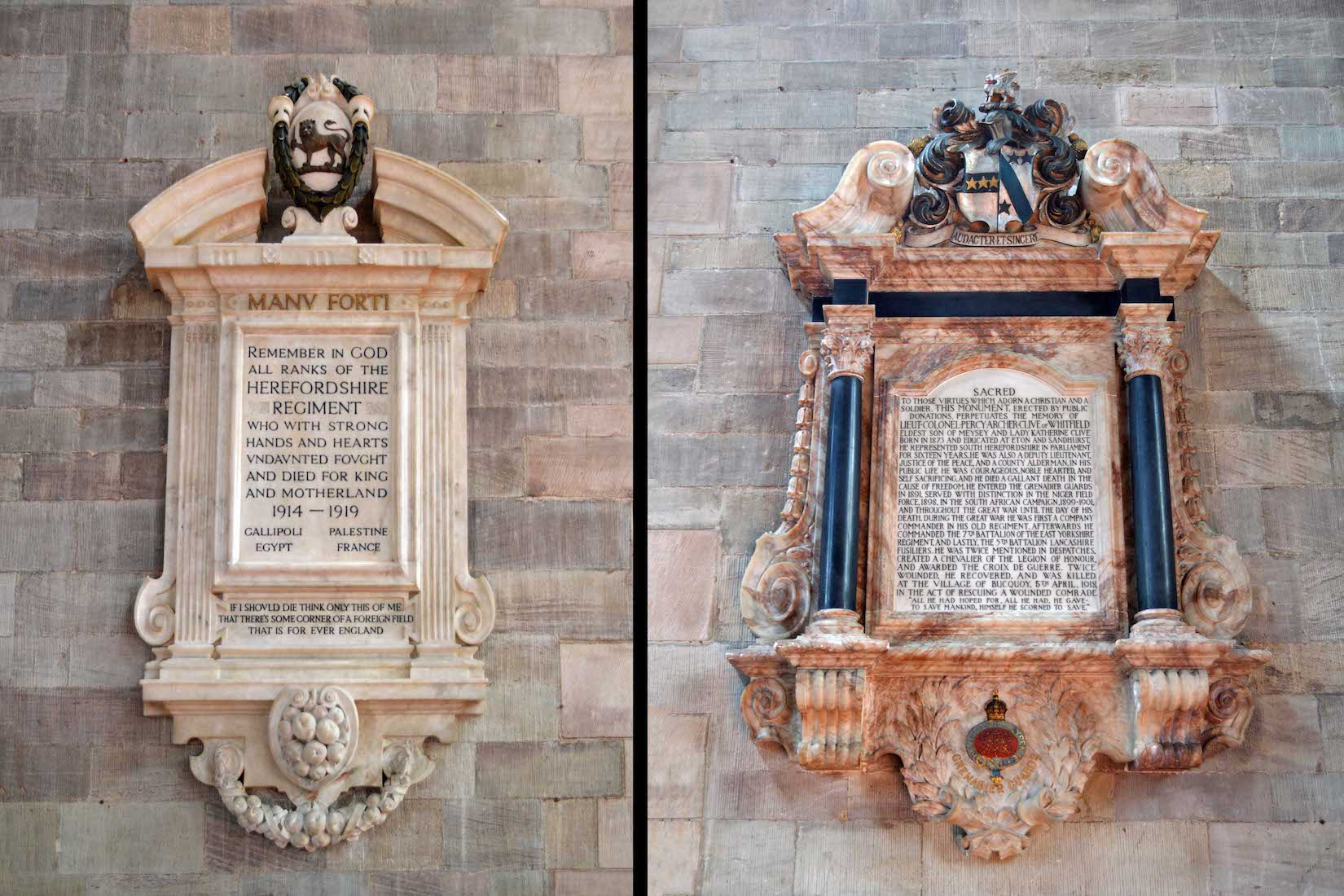81. VIEW BACK ACROSS TO NORTH TRANSEPT
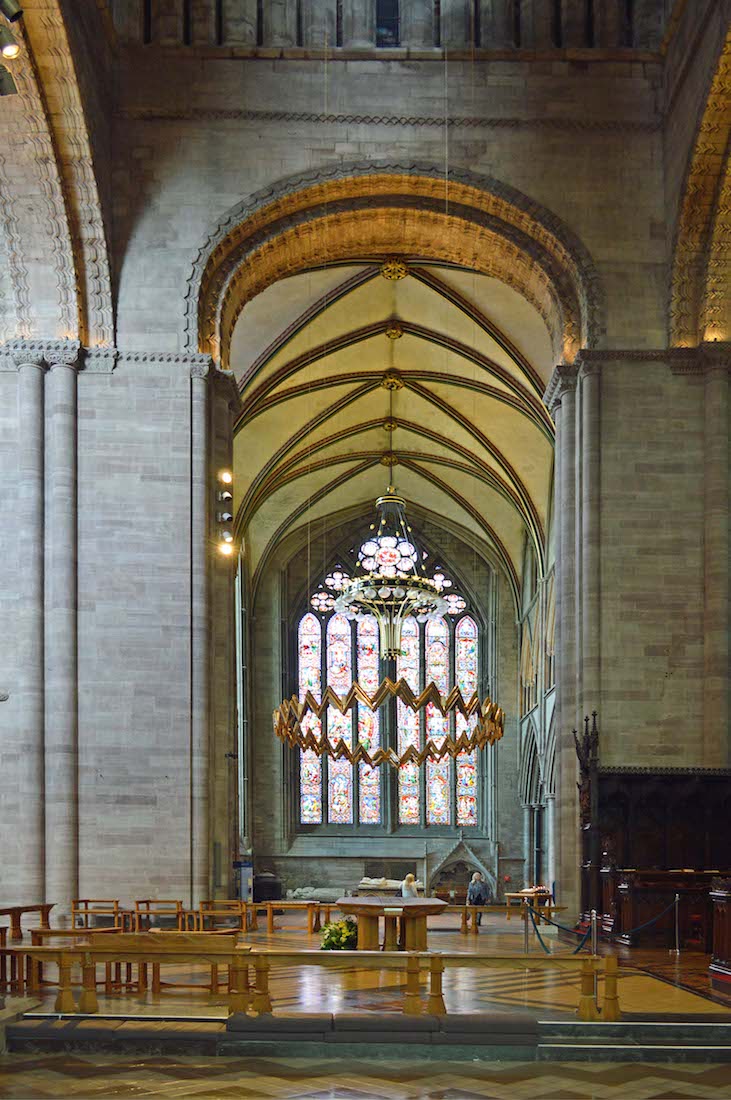
Somtimes it is good to look back to where we have been: in this case back beyond the crossing to the North transept. But we turn our attention to the South transept. PLAN
83. JOHN PIPER TAPESTRIES
Three tapestries by John Piper adorn the Norman arches of the East wall of the transept. These were installed in 1977 and depict the Fall (Adam & Eve), the Redemption (Christ taken down from the Cross) and the Tree of Life. The tapestries were woven in Namibia to Piper’s designs.
84. IN THE TRANSEPT
At left is the Renaissance tomb of Alexander Denton (d.1576) and his wife Anne (nee Williams). One of their children who died soon after birth is commemorated by the baby enfolded in his mother’s garments. At centre is a model Cathedral made of bread (an allusion to ‘The Bread of Life’), and above is a display of hanging model paper churches. The tomb and effigy behing this display belong to John Tennant who was bishop of this Cathedral from 1389 to 1404. The cross at right is a memorial to the Venerable William Waring of this Cathedral.
85. WEST WALL
Looking back along the West wall of this transept we see a display of cross and candles, and then the triptych we noticed before.
86. CROSS AND CANDLESTICKS
The cross and candles are items from the Cathedral Treasury. In fact they are a 17th Century Portuguese crucifix, and two matching 20th century English candlesticks. The candlesticks were made by Harman and Co. of New Bond Street, sliversmiths of the highest order. They bear the London hallmark for 1928. The accompanying sheet gives more information.
87. TRIPTYCH
The triptych showing the Adoration of the Magi, with St Gabriel and St Ursula on the side panels, is by the South German (Swabian) school, about 1530, given by Lennox Lee in 1935. The wings or doors are closed during Lent, showing St Andrew and St Sebastian.
88. TRANSEPT HIGH VIEW
My rule for visiting cathedrals is to look down (at the often special tilings) and to look up. Here we can see the triforium and clerestory levels, the special light fitting, a glimpse of the crossing roof, a small window, the chevron patterns on the round arches, golden bosses on the ceiling, ... . So much detail, which often goes unnoticed.
89. INFORMATION BOARDS
Hereford Cathedral has a large number of these information boards which are very useful for providing details to the interested visitor.
91. HIGH WINDOW
This slightly oddly shaped window in the South nave aisle contains a patchwork of fragments of 15th century glass collected from different windows in the Cathedral (the tracery glass is early 20th century). The doorway leads through to the cafeteria, museum, Mappa Mundi and Chained Library, as well as the Southern gardens.
92. SOUTH NAVE WINDOWS
The three windows at left are early twentieth-century windows from the London firm of Powell and Sons, based at Whitefriars. The windows show (from left): the visit of King Charles I to the city in 1645; various Old Testament musicians (in memory of Sir Frederick Arthur Gore Ousely); a series of Biblical mothers and their children (in memory of Frances, wife of Dean Leigh). The blue window relates to the sculpture below, and is by John Maine.
93. ANOTHER VIEW
The South aisle from the West end ... .
94. ALONG THE SOUTH WALL
There are several items of note along this wall. At left is an unknown bishop’s tomb, c1330. The effigy’s head has been severely damaged by Cromwell’s men. At centre is a memorial to the Special Air Service (SAS). The sculpture and window were completed in April 2017 to mark the seventy-fifth anniversary of the foundation of the SAS in 1941. The SAS maintains a long and close association with Hereford Cathedral, the City and County. Further West along this wall is a framed and detailed tapestry.
95. THE PEMBRIDGE TOMB CHEST
Before we leave the South nave aisle we need to return to the knight's effigy – the tomb of Sir Richard Pembridge KG (d.1375). This is on the other side of the aisle, between two of the supporting columns. Pembridge was one of the earliest appointed Knights of the Garter. He is sculpted in life-size in alabaster, fully armed and wearing the Garter on his left leg below the knee. There is a curious story about the third leg ... . When his alabaster tomb was constructed the effigy correctly showed him wearing the garter on his left leg. The right leg was damaged during the 17th century during the Civil War. A replacement wooden leg wrongly included the garter. In the 19th century a new alabaster leg without garter was commissioned. Now Sir Richard’s spare leg has been reunited with the tomb thanks to a private donor.
96. BAPTISMAL FONT
Near the back of the nave is the baptismal font. This round Norman font is large enough to immerse an infant. It dates from the mid 12th century, and is decorated with figures of the twelve apostles around the bowl. The faces of the apostles were defaced during the Reformation. Lion figures guard the base of the pedestal.
97. BAPTISMAL ICON
On a nearby column is this colourful icon depicting the baptism of Jesus. It is in Romanesque Style, made with egg tempera and gold leaf on a gessoed panel. It measures 100 x 75 cm.
98. WEST NAVE
We have now reached the West wall of the nave. Below the West window the doors have a distinctive criss-cross timber pattern. On either side is a memorial, and below, honour roll books of some sort. To the right, beyond the columns, is a stained timber structure – perhaps an altar?
99. WEST NAVE WINDOW
We have now reached the West wall of the nave. Below the West window the doors have a distinctive criss-cross timber pattern. On either side is a memorial, and below, honour roll books of some sort. To the right, beyond the columns, is a stained timber structure – perhaps an altar?
100. WEST WALL MEMORIALS
The left tablet reads: ‘Remember in God all ranks of the Herefordshire Regiment who with strong hands and hearts undaunted fought and died for king and Motherland 1914–1919 Gallipoli, Palestine, Egypt, France.’ The tablet at right is a long dissertation perpetuating the memory of Lt-Col Percy Archer Clive (1873 – 1918). On 5 April 1918 Percy Archer Clive became the twentieth MP or former MP to die while serving with the forces during the First World War.


